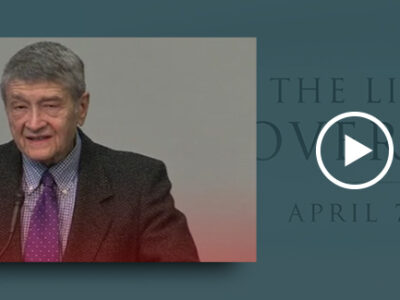
Six months ago, the idea of expanding the size of the U.S. Supreme Court was side-stepped by presidential candidate Joe Biden, and the issue seemed to wane. But now, “court packing” has surfaced once again—and in two forms. The first is an executive order from President Biden creating a commission to study possible reforms of the Supreme Court. The second is legislation proposed by progressive Democrats to increase the court’s size by four new justices.
The first question to be considered is this: Can the United States Congress constitutionally change the size of the Supreme Court? The answer is yes. It has done so several times in the remote past. For 152 years, however, i.e., since 1869, the Supreme Court has remained at nine justices.
What are the reasons advanced for changing the court’s size now?
 The least convincing and most obviously political reason for change has been expressed by Erwin Chemerinsky, dean of the University of California Berkeley’s Law School. He says that expansion of the court “is the only way to keep there from being a very conservative court for the next 10-20 years.” Clearly, Chemerinsky is not objecting to the structure or size of the court. He simply does not like the judicial philosophy of a majority of the sitting conservative justices and wants to give President Biden the occasion to add liberal/progressive justices. If Chemerinsky’s approach were to be adopted, the court would become a true “political football.” Once Republicans gain the slightest edge in Congress and elect a Republican president, the court could be “expanded” again, this time peopled by a new foursome of conservative justices. The court would now be fully politicized and the certainty of its holdings would only last until the next election cycle.
The least convincing and most obviously political reason for change has been expressed by Erwin Chemerinsky, dean of the University of California Berkeley’s Law School. He says that expansion of the court “is the only way to keep there from being a very conservative court for the next 10-20 years.” Clearly, Chemerinsky is not objecting to the structure or size of the court. He simply does not like the judicial philosophy of a majority of the sitting conservative justices and wants to give President Biden the occasion to add liberal/progressive justices. If Chemerinsky’s approach were to be adopted, the court would become a true “political football.” Once Republicans gain the slightest edge in Congress and elect a Republican president, the court could be “expanded” again, this time peopled by a new foursome of conservative justices. The court would now be fully politicized and the certainty of its holdings would only last until the next election cycle.
Another assertion made many years ago by professors Steven Calabresi and James Lindgren is recirculating. At that time (2005), there had not been a court opening in 11 years and, therefore, a lull in appointments. Calabresi and Lindgren feared that duly elected presidents were not getting a fair opportunity to appoint judges to this important body during their terms and that trend would continue. History proves otherwise.
Virtually every U.S. president serving a full term, Jimmy Carter being the only exception, has had the opportunity to appoint at least one justice. Remarkably, the average number of appointments by each of our 46 presidents is approximately 2.6 appointees. Note that President Trump’s total of three appointments is only slightly higher than the average and was made possible by the highly unlikely occurrence of the death of two justices and the resignation of another in a short span of years. (Incidentally, the 11-year-lull was ended before the completion of President George W. Bush’s second term, when he appointed one justice, Samuel Alito, and a new chief justice, John Roberts.) Historically, one-term and certainly two-term executives will have an opportunity to influence the court by making appointments.
However, Calabresi and Lindgren warned that justices were retiring on average 10 years later than their predecessors. This reality, they argued, was producing justices who were “feeble.” Also, this lengthening service allowed justices to go for long periods without a “democratic check” on such officer-holders. Therefore, they proposed an 18-year term limit for justices. This same idea has resurfaced today, supported by leftist organizations like Fix the Court and the Center for American Progress.
First and foremost, the Constitution conceived by the founders was not a uniformly “democratic” document. It is an example of mixing various governmental forms together. The House is “democratic,” although not a direct democracy where “the people” vote on every issue. The design of the Senate is not democratic because the founders gave equal power to states regardless of their population size. Californians have two senators and so do citizens of Montana. The president has monarch-like veto powers and is chosen by an Electoral College, not by popular vote. Supreme Court justices are not voted into office by the people but nominated by the president, and the “aristocratic” Senate must confirm the nominee. Thoroughly changing that structure would require numerous constitutional amendments. It would ignore the founders’ justifiable concern that purely “democratic” governments may pose a danger to the fundamental rights of citizens.
 For the sake of argument, what would have happened if the 18-year term limit had been the rule from 1789? John Marshall, the chief justice who shaped the court for 34 years, would have been dispatched from service before his famous decisions in McCulloch v. Maryland and Gibbons v. Ogden. Other jurists of prominence—Joseph Story, Stephen J. Field, Hugo Black—all serving 34 years, would have had their careers cut short. Liberals like William Brennan—serving for 33 years—would have been unceremoniously ushered off the bench a little over halfway through his term. Ultimately, changing the tenure of judges would require a constitutional amendment because the Constitution gives judges tenure on good behavior, which is for life. Mustering support for such a change is unlikely.
For the sake of argument, what would have happened if the 18-year term limit had been the rule from 1789? John Marshall, the chief justice who shaped the court for 34 years, would have been dispatched from service before his famous decisions in McCulloch v. Maryland and Gibbons v. Ogden. Other jurists of prominence—Joseph Story, Stephen J. Field, Hugo Black—all serving 34 years, would have had their careers cut short. Liberals like William Brennan—serving for 33 years—would have been unceremoniously ushered off the bench a little over halfway through his term. Ultimately, changing the tenure of judges would require a constitutional amendment because the Constitution gives judges tenure on good behavior, which is for life. Mustering support for such a change is unlikely.
Finally, return to Chemerinsky’s politically transparent claim that the progressive left is doomed to suffer defeats for the next two decades by a conservative court. That is certainly an exaggeration. The court’s history as a nine-member body is not a story of a single, unchanging judicial philosophy or political hue. If one seriously surveys “the nine” over those 152 years, one finds everything from the staunch resistance to state governmental regulations of the Fuller court to the aggressive federalization of the criminal law and the end of school segregation of the Warren court. Such a survey cannot ignore the controversial holding in Roe v. Wade of the Burger court followed by the judicial restraint of the Rehnquist court. Finally, one could hardly predict the decisions of the current Roberts court, with its own surprises on social sexual discrimination policy.
The independence of the U.S. Supreme Court makes it stable and dignified, and yet at the same time, maddeningly inscrutable to both sides of the political divide. There is no convincing argument that justifies changing its composition.




